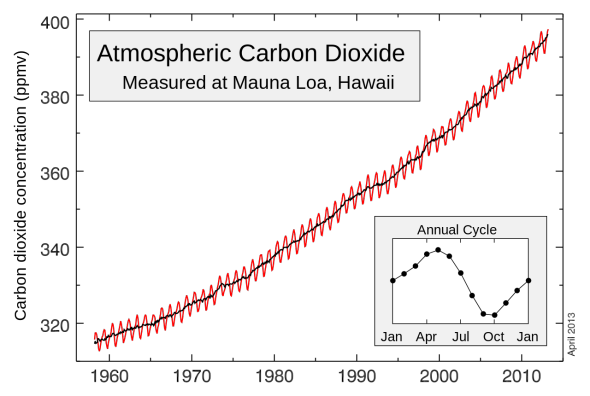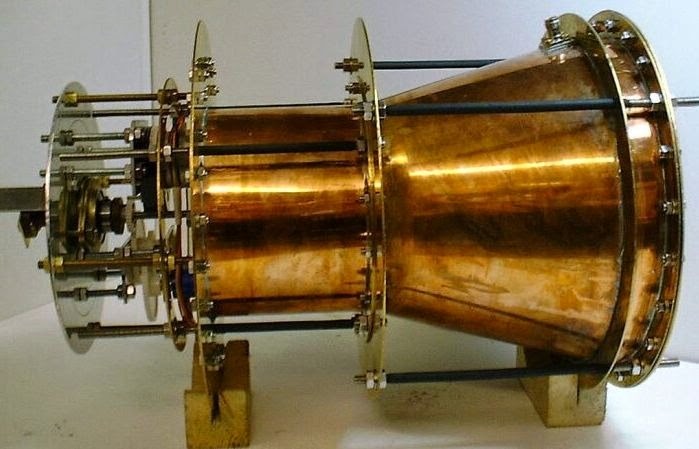The short answer of why I decided to make the female heroine of my fantasy/romance novel The Last King really dark and really feminine is because such a woman is a rarity to see in literature, film or television.
I mean, even if a heroine is black, she’s likely brown-colored or light, and she is most certainly going to have straight hair and not her natural curls.
Not so with Emmy Hughes – I decided to make her everything this world insists should not be considered beautiful, lovely and worth persuing – dark-skinned with kinky hair (okay, it’s BIG kinky hair for sure, no teeny weeny afro’s I admit, but that’s because I like BIG hair).
The main reason I did this is because I’m tired of seeing the same images played out in the media of what’s attractive. I specifically wanted to contribute, no matter how small, to the idea of black women being seen as attractive and feminine.
Why feminine? Because black women have traditionally been denied the right to be seen this way, and personally, I think this has hurt us in numerous ways.

Yes, Virginia, feminine women do benefit in a society.
You see, feminine women tend to benefit from the resources of masculine men. Heck,they benefit from society in general, and the fact is, black women have never really benefited from society or from men - be it black men or white men (I speak of benefits in a healthy way – I’m not talking about gold-digging here; because benefiting isn’t just about economics – there are also physical, emotional, spiritual and social benefits).
What do I mean by black women haven’t benefited from men because we aren’t viewed as feminine? Well, bear with me on this train of thought.
Take a moment and think of how you, dear reader, view black women. Go on and be very honest with yourself. It’s only you and I ‘in the room’ at the moment. Now, think of most of the images you have either seen of black women, or associate with black women: from books and films, to television and music videos, black women have more often than not been portrayed in the following ways— as mammies, Jezebels, gold-diggers, and sapphires. On the news you will see hyped-up images of welfare queens or single moms, or loud uncouth individuals (the Claire Huxtables and Michelle Obama’s are rarely given their due) and in modern society black women have even become viewed as independent or STRONG black women.
Yet the one thing you rarely see us viewed as is FEMININE and desirable – at least, not desirable in respectable way.
We have not been considered the soft types who are worthy of pursuit; or who – as Sojourner Truth once mentioned in her famous speech “Ain’t I A Woman?” – are worthy of being helped into carriages (“That man over there says that women need to be helped into carriages,” Sojourner said, “and lifted over ditches, and to have the best place everywhere. Nobody ever helps me into carriages, or over mud puddles, or gives me any best place, and ain’t I a woman?”).
I think this view of us, this view that we have now internalized, has actually done great damage to our psyche.
Because of slavery, and the white mentality that instigated that slavery, we have been seen as chattel and sub-human. And “chattel” does not reap the resources of men or society, because it is assumed that chattel has no needs.
Indeed, chattel, mammies, jezebels and STRONG women are seen as neither needing a helping hand nor as deserving of one.
Now, recall again how you tend to view black women; better yet, recall the images you often see of us. From Mammy inGone with the Wind to Aibileen in The Help, and from Celie in the Color Purple to Precious and her mother in Precious (all of which are Oscar nominated films by the way; don’t you just love the roles Hollywood likes to see us nominated in?), we have by and large been viewed in a variety of negative, or unattractive roles, but never feminine ( (I’m not saying all images of black women are like this; but a good majority are – you get the point).
Yes, let’s take a look at these images, in case you have forgotten them.
THE HELP….(Oscar nominated film)
 We’ll handle the work: we can take it.
We’ll handle the work: we can take it.
PRECIOUS…(Oscar nominated film).

No need to pursue us: nothing feminine here!
GONE WITH THE WIND…. (Oscar nominated film).

Whatever I can do fer Scarlett makes me happy! I got no needs of my own.
Now, consider their white or lighter skinned counterparts in each of these films.
THE HELP…

Even though I’m mean, I’m all dolled-up
PRECIOUS…

You poor, fat, black thing! Thank God I’m not you.
GONE WITH THE WIND….

My goodness! Don’t I, Scarlette, look delicate. Even when I’m distressed!
Continue looking at some of these images below. Which of these two groups of women, white or black, seem either unattractive, unfeminine and/or able to carry heavy loads? Be honest with yourselves now. (Ugh! The black women in these images, in these movies, don’t even get to wear make-up. Please. Women have loved prettying themselves up since the dawn of time – and that includes black women!)
But you wouldn’t know that black women want to be pretty too, at least, not from these pictures below.↓
PINKY…

Hair done. Check. Make-up on. Check. Too bad for the mammy figure though…
THE HELP….

You carry the load, and I’ll stand here in pink and look good.

An unrealistic image of a woman first thing in the morning. Gone with the Wind.
Meanwhile, white women have often been portrayed as dolled-up and feminine in situations where they shouldn’t be all dolled-up (like those old movies where the women wake-up first thing in the morning with all their make-up already on, i.e. the legendary Gone with the Wind. Meanwhile, the women in The Help can’t even get a little lipstick going on).
Now consider the show Orange is the New Black. I notice on huge billboards in New York that although everyone is in prison, the white female lead still gets to look like she just came out of a hair and make-up salon!

Even in jail, Hollywood is gonna make me gorgeous.
Meanwhile, crazy-eyes looks like something I have seen in old posters of black people that meant to degrade us.

Crazy-Eyes today.

“Crazy eyes” from yester-year. Crazy-Eyes, you seei, is not a modern view of black women, but an old repeated one.
Continue to look below:
Now, is it me, or does the blonde woman in OITNB look good, dare I say even feminine, in all of these pictures? Can’t say the same for the black woman – she looks JACKED-UP and freaky. Even the lady with the knife gets to wear lipstick!


Man,you look great! I look, well, crazy.
I even think the above picture ↑ reminds me of, well, this picture below ↓. Which characters look wild-eyed and a little insane and which ones look nice or sweet or calm and normal? You be the judge.

Look familiar?
Continue looking. Who gets to be feminine the majority of the time in film and television?

Count the feminine looking ones, and the ones who look jacked-up
No, seriously, I’m smelling some of the same-old same-old in depictions of us. Look below when the old “coons”of yesteryear ate watermelon. Thank goodness black women today only get to be degraded by eating pie and shoving it on their faces.

Last time we saw you, you were eating watermelon. Now, Crazy-eyes, you’re eating pie.

New era, same non-feminine, even coonish imagery.
Actually, I just want to take a break here and show some old photos of my grandmother and mother (ok, grandpa is in here, too). These were very feminine women that I grew up with. Yet I rarely saw or even see their likeness portrayed in books and movies in a healthy way – again, I’m not talking about rare exceptions. I’m saying I didn’t and do not see these images of black women the majority of the time.

My grandparents in1944. No cooning here. And man! Did they have style.

Gasp! Black women even liked dressing up their little daughters. My mama and my aunt.

My feminine mama: yep, she liked make-up. And her eyes weren’t bucked-out while throwing pie on her face.

Where are these black women in movies, books and films?

Who gets to be pretty and pursued?
Now where was I?
Ah, yes.
These are some of the reasons I purposely made my Emmy Hughes from The Last King very soft and feminine. It’s also why I put her in situations where she needed the help and resources of men – of her beloved father, and of her soon-to be love interest, Gilead Knightly. Both men are present in her life for a reason. (I also wanted to give her a life that was not filled with pathology – violence, incest, drugs, ghetto behavior, etc.).
And I did not make her a STRONG character; at least, not unnecessarily so. She’s smart for sure, and not anyone’s punching bag, but she does need assistance.
After all, why must black women be so STRONG that we take on burdens that are physically, mentally and emotionally crushing us? Has our strength stopped our obesity and health epidemic? Has our STRENGTH stemmed the flow of unwed motherhood (a problem that is wreaking havoc both in our communities and for future generations). Has our STRENGTH helped our numbers in marriage rise?
No.
And that’s a big NO.
Now, as a black woman myself, I am NOT here to put down other black women. I am here hoping to help change how we view ourselves, first and foremost.

Black beauty – soft and feminine
Personally, I think being soft and feminine and in need of help is great place for us to start. Other women need help. What’s wrong with us admitting we need it, too? Being strong in the sense of taking on everything, and helping everyone, while needing no help and love for ourselves is stupid. And it’s part of an image that was assigned to us in slavery. Therefore, it can’t be good.
Now I ask you, when is the last time you saw in a movie or film, a dark-skinned woman, pretty, made-up, hair done, being pursued as a romantic interest? When do you get to see us being soft and feminine and wanted? Think hard now. Because even if you do come up with one such movie, it will likely be, well, one movie (unless it’s an independent film; I admit I am not up to date on my independent movies.)
And when is the last time you heard someone say, “Wow, she’s a strong white woman. Look at that strong Japanese woman! You go girl!”
Nobody says that.
Now don’t get me wrong. Strength in a woman does have a place: after all, there is work to do in this world. There are families to care for and dreams to achieve. It takes strength to accomplish any of those tasks. But strength in a woman as her main character trait does not bode well. You see, it cannot be the defining characteristic when one thinks of a woman.
And if you do believe strength should be a woman’s defining characteristic, consider where it has gotten us. The black community is now a matriarchal community that has a 70 percent out of wedlock rate. This not strength. This is brokenness.
But, listen. I know that calling a woman strong first and foremost, sounds like a compliment. I get it. You mean well by it. But underneath that “compliment” lies the (sometimes) unintentional belief that since a black woman is strong she can handle suffering more. She’s all good, and is able to endure all kinds of trauma and strife, with no need to pour her heart out from the deep pain she truly feels.
Baloney.
All of this so-called strength is actually sapping us of our joy. In not being viewed as feminine we have lost an ability to be vulnerable and lean on others – particularly on men.
Yes, I said it. I said the word Men. They are NOT a necessary evil. Their strength is needed. And men, the masculine ones at least, tend to like feminine and vulnerable women as romantic interests (I’m not talking about stupid, blind vulnerability either; you know, the kind that allows a women to be a punching bag -um, no thanks!).

Delicate and vulnerable
You see, to be a STRONG black woman as opposed to a feminine black woman indicates no need for us to be vulnerable or open. But a woman, almost by definition, is more vulnerable in this world, simply because were are not physically stronger than men. That’s a fact.
Indeed, we have been led to believe such traits of vulnerability are weak (probably because vulnerability does lead to the possibility of being hurt; but being strong has done on a whipping on us, too). But in fact, we are hurting more because we aren’t open to admitting we need the help of others, of men in particular, in our lives. And yet, we have love to give and we have love that we need.
We need the resources of men, because men, when they use their strength in the right way, are wonderful!
This is where viewing ourselves as feminine comes in. Because, you see, feminine women are thought of as worthy of being the sorts of women that men want to rescue and offer a helping hand to.
Who wants to be viewed as The Help all the time? Ugh!
And this foolish thinking we have about ourselves won’t change until we stop seeing ourselves as The Strong Help – Able To Do It All, No-Make-Up or Soft Qualities Needed.
We are NOT the help and we are not masculine women. We are soft, feminine women who can get the job done when it’s needed, sure, but we want to be pursued and rescued, too.
So I think we need to cease singing that Aretha Franklin song “Sisters Are Doing It For Themselves” or the Destiny’s Child tune “Independent Woman.”
We have been doing it for ourselves all along. We have been strong, and we have been independent.
And frankly, it’s killing us.
BIOGRAPHY of A. Yamina Collins
The Last King is Yamina’s first novel, and it has already been in Amazon’s Top 100 Bestseller’s list in Fantasy, Science-fiction, Women’s Fiction Literature and Christian Women’s Literature.
A graduate of New York University, she lives in Manhattan and currently blogs at Yaminatoday.com. Her dream as an author is to help create new images of major African-American characters in literature.
She hates stereotypes. No, really. She does.

































